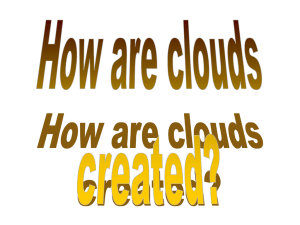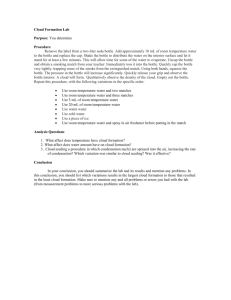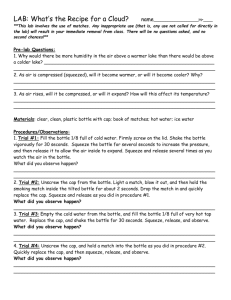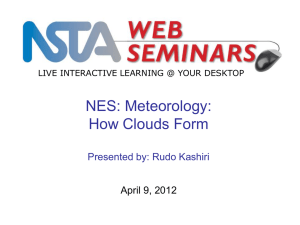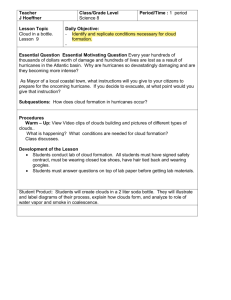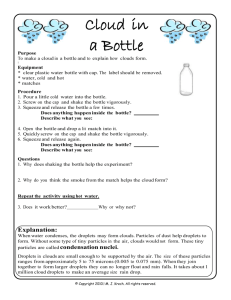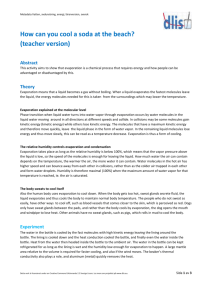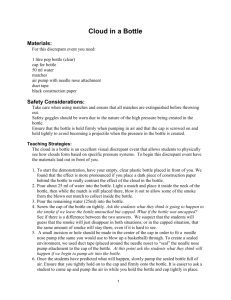Name date ______ period ______ Cloud in a Bottle Lab You need
advertisement
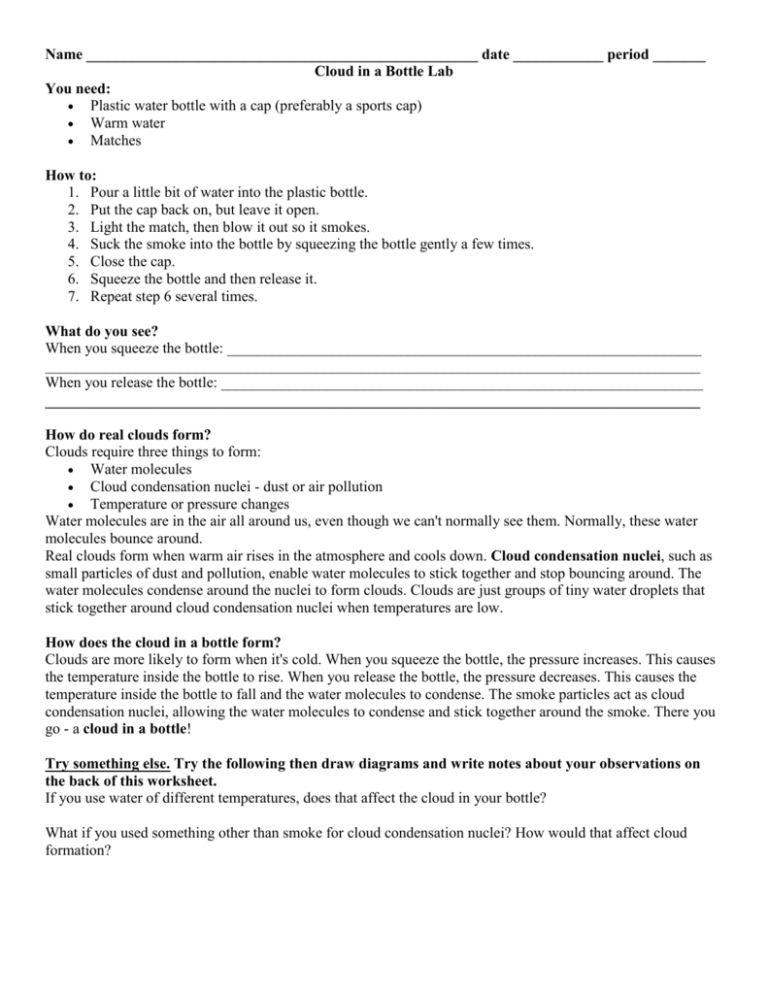
Name ____________________________________________________ date ____________ period _______ Cloud in a Bottle Lab You need: Plastic water bottle with a cap (preferably a sports cap) Warm water Matches How to: 1. Pour a little bit of water into the plastic bottle. 2. Put the cap back on, but leave it open. 3. Light the match, then blow it out so it smokes. 4. Suck the smoke into the bottle by squeezing the bottle gently a few times. 5. Close the cap. 6. Squeeze the bottle and then release it. 7. Repeat step 6 several times. What do you see? When you squeeze the bottle: _______________________________________________________________ _______________________________________________________________________________________ When you release the bottle: ________________________________________________________________ _______________________________________________________________________________________ How do real clouds form? Clouds require three things to form: Water molecules Cloud condensation nuclei - dust or air pollution Temperature or pressure changes Water molecules are in the air all around us, even though we can't normally see them. Normally, these water molecules bounce around. Real clouds form when warm air rises in the atmosphere and cools down. Cloud condensation nuclei, such as small particles of dust and pollution, enable water molecules to stick together and stop bouncing around. The water molecules condense around the nuclei to form clouds. Clouds are just groups of tiny water droplets that stick together around cloud condensation nuclei when temperatures are low. How does the cloud in a bottle form? Clouds are more likely to form when it's cold. When you squeeze the bottle, the pressure increases. This causes the temperature inside the bottle to rise. When you release the bottle, the pressure decreases. This causes the temperature inside the bottle to fall and the water molecules to condense. The smoke particles act as cloud condensation nuclei, allowing the water molecules to condense and stick together around the smoke. There you go - a cloud in a bottle! Try something else. Try the following then draw diagrams and write notes about your observations on the back of this worksheet. If you use water of different temperatures, does that affect the cloud in your bottle? What if you used something other than smoke for cloud condensation nuclei? How would that affect cloud formation?

